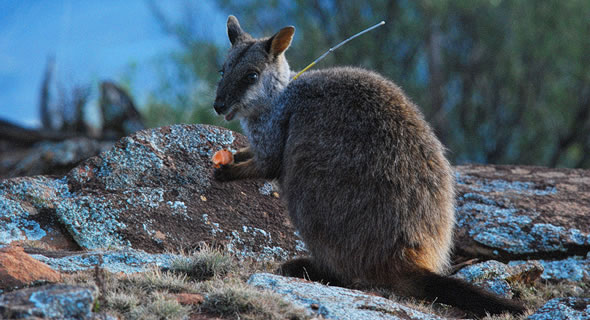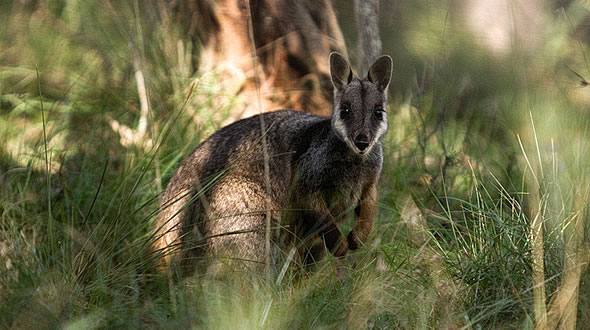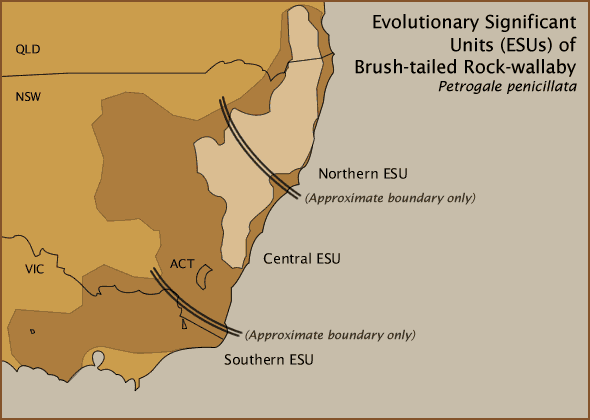Habitat
Brush-tailed Rock-wallabies, as the name suggests, like rocks – whether they be rocky escarpments, cliffs, or exposed through the earth’s surface.
 Photo: Hugh McGregor
Photo: Hugh McGregorThey like areas which have caves and ledges for shelter especially those that face north for warmth. Dense vegetation is used for shelter and they have been known to escape predators in the lower branches of trees. They feed on native forbs and grasses found in surrounding habitat at dusk and dawn, as well as the foliage, fruits, roots and bark of shrubs and trees.
 Photo: Ben Bishop
Photo: Ben BishopThey have diverse foraging or feeding habitats, which usually have a grassy understory, however, they will feed in artificial clearings and at the edge of pastures.
Population
From 1900 to 1920, hundreds of thousands were shot as agricultural pests and hunted for fur. It is estimated that there are only 15,000 – 30,000 animals left in Australia (NSW Recovery Plan).
It is difficult to estimate population sizes because they are nocturnal, and occur in very rugged terrain.
Genetic research shows that there are three distinct groups or Evolutionary Significant Units (ESUs) of Brush-tailed Rock-wallabies:
- Southern group, Victoria – estimated at just 30 individuals!
- Central group, south of the Hunter River to southeast NSW – estimated 500 – 1,000 individuals.
- Northern group, centered in southeast Queensland and northeast NSW – roughly estimated at 10,000 – 25,000 individuals.
 Evolutionary Significant Units (ESUs). NB. ESU boundaries are indicative only
Evolutionary Significant Units (ESUs). NB. ESU boundaries are indicative only(DECC 2008 – NSW Recovery plan for the Brush-tailed Rock-wallaby – Petrogale penicillate)
State Information
What you can do!
An important aspect of Brush-tailed Rock-wallaby recovery is the active involvement of local landholders and the community overall. See what you can do!
Resources
- Vortex Project Brief
- The Shadow – Newsletter of Brush-tailed Rock-wallaby conservation in Victoria
Did you know?
Rock-wallabies aren’t found anywhere else on earth. There are 16 species of rock-wallaby and they form the largest group of macropods (marsupial with large hind limbs) in Australia.






